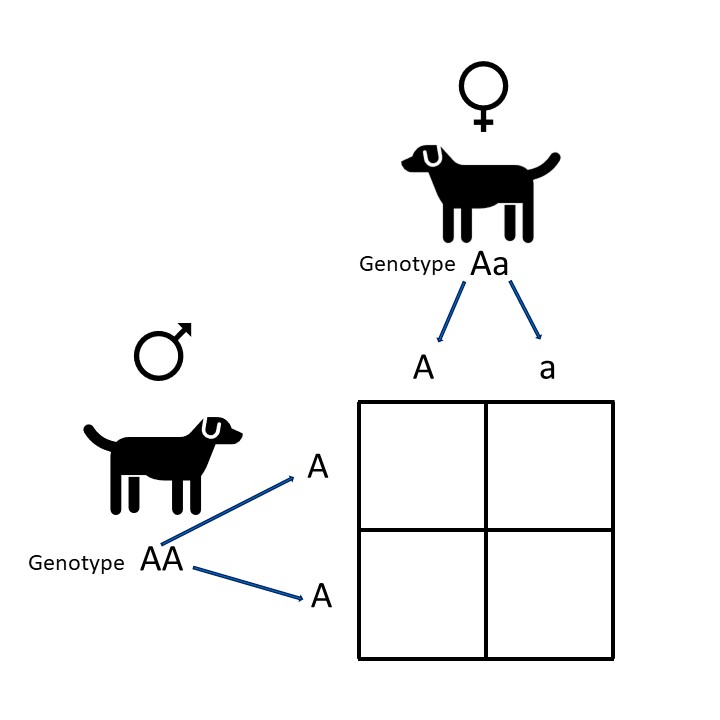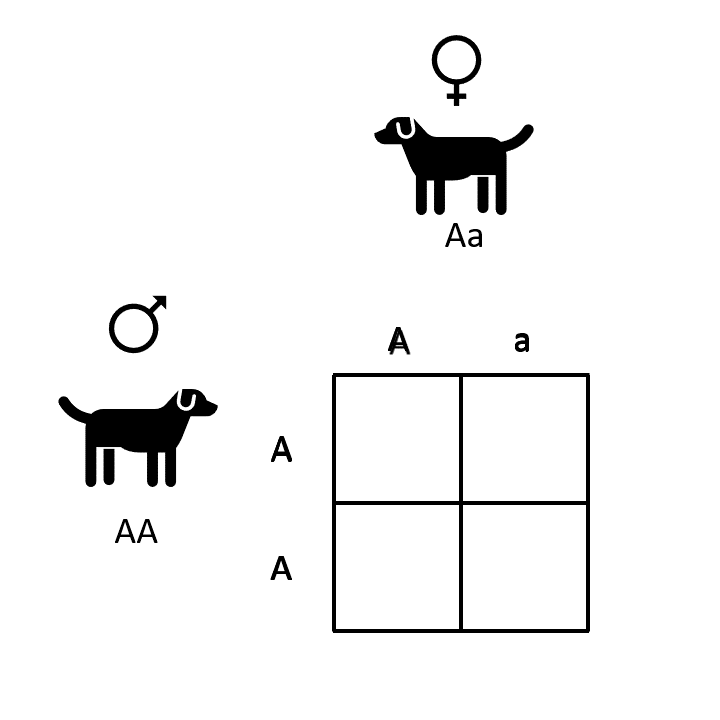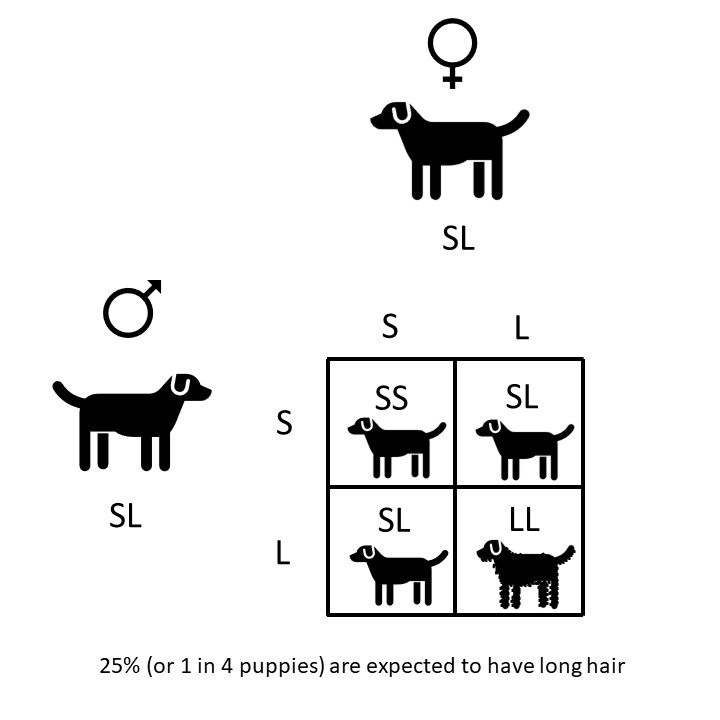Knowing the possible outcomes of a mating can be very important in a breeding program, especially when you want to avoid passing on negative traits to the next generation.
If knowing the inheritance pattern for a particular trait, and it is determined by a single gene, we are able to use the parents' individual genotypes to predict the possible outcomes of a mating pair. We can use a Punnett Square for this purpose.
A Punnett Square consists of a table with four quadrants. The dam's genotype is listed at the top of the table and the sire's genotype is listed on the side.

A genotype is the combination of the two alleles (i.e., the two copies) an animal has for each gene. Since each puppy receives exactly 1 copy of each gene from the mother and 1 copy from the father, we need to separate the two copies and then combine the parents' contributions in the inner boxes of the Punnett Square to see what genotypes could be seen in the puppies.

Let's take a look at an example for coat length. The VGL reports coat length by using the letter "S" to refer to the short hair allele and the letter "L" to refer to the long hair allele. Short hair is dominant over long hair.
If we had two heterozygous short-haired parents that we would like to breed and we wanted to know how many long-haired puppies we could get from this breeding, we could use a Punnett Square to determine that. We would first fill in the parents' genotypes (both dam and sire have the genotype S/L), and then combine their alleles as if simulating fertilization to see what are the possible genotypes a puppy from that mating could have.

